Danske and Bank of Ireland to introduce 'plastic notes'
- Published
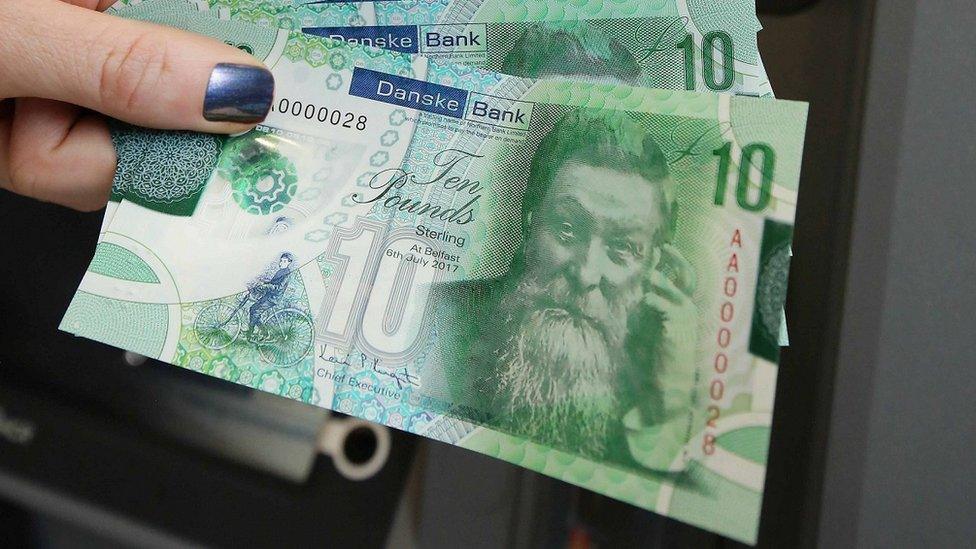
Danske Bank's new £10 polymer note will be similar in design to its current paper note, bearing a portrait of tyre inventor John Dunlop
Two Northern Ireland banks have announced a switch to polymer £5 and £10 notes.
The new Danske Bank and Bank of Ireland currency will enter circulation in February 2019.
Northern Ireland's four banks can print their own money and three of them are now all set for change.
In 2017, Ulster Bank also said it was moving to cash made from plastic material, following the Bank of England's lead in 2016.
The first plastic £5 was introduced in Northern Ireland by Northern Bank in 1999: Two million special edition notes were made to mark the millennium.
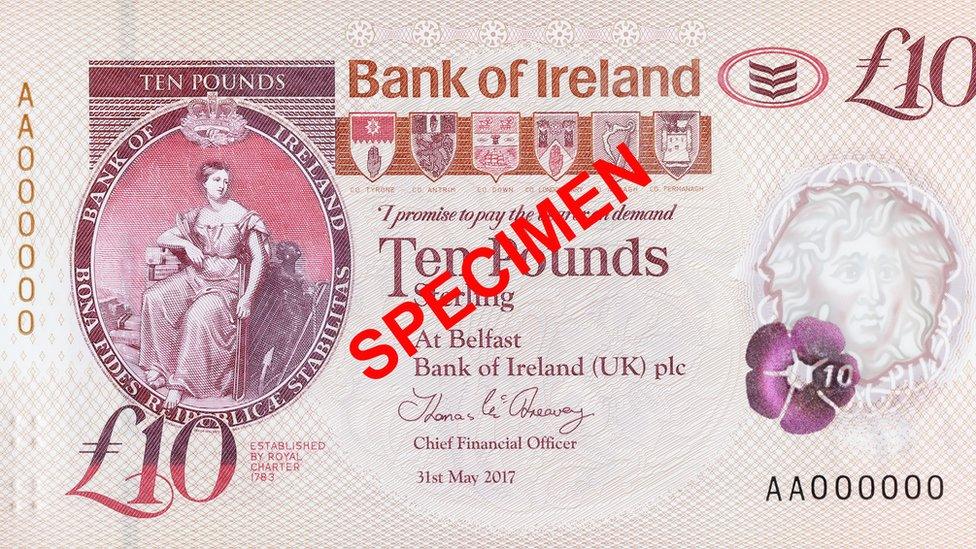
Bank of Ireland said the announcement marked "the single biggest change in living memory" for Northern Ireland notes
There is said to be about £2.5bn worth of Northern Ireland banknotes in circulation.
But much of it is now set to be replaced.

There is said to be about £2.5bn worth of Northern Ireland banknotes in circulation
Danske Bank's new £10 polymer note will be similar in design to its current paper note, bearing a portrait of inventor John Dunlop.
Although born in Scotland, the developer of the tyre spent most of his working life in Belfast.
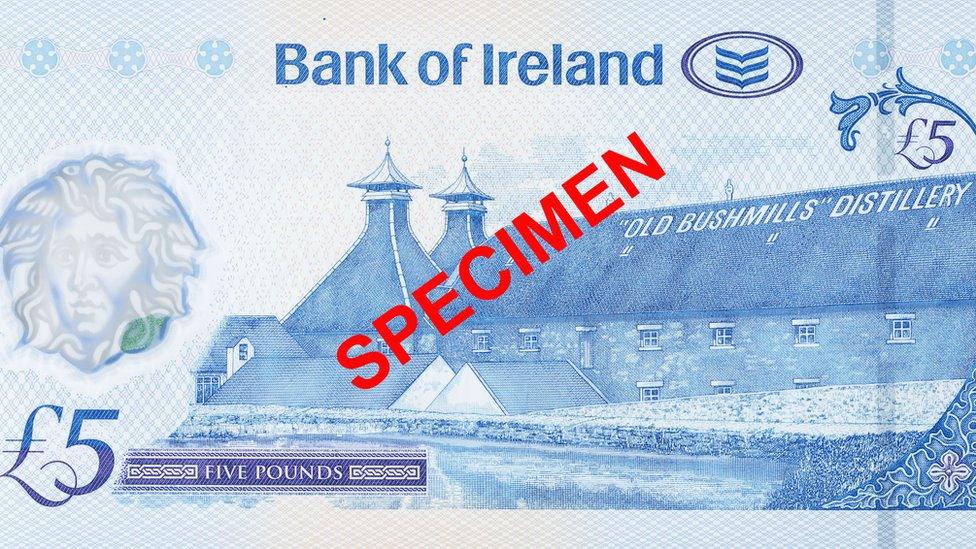
Bank of Ireland is to produce new £5 and £10 notes, with the polymer versions retaining the image of Bushmills Distillery in County Antrim.
Both banks will also introduce polymer £20 notes in 2020 or 2021.

Bank of Ireland said the announcement marked "the single biggest change in living memory" for Northern Ireland notes.
Neither has said when the paper note equivalents will cease to be accepted, but they will be gradually removed from circulation.
- Published24 July 2017
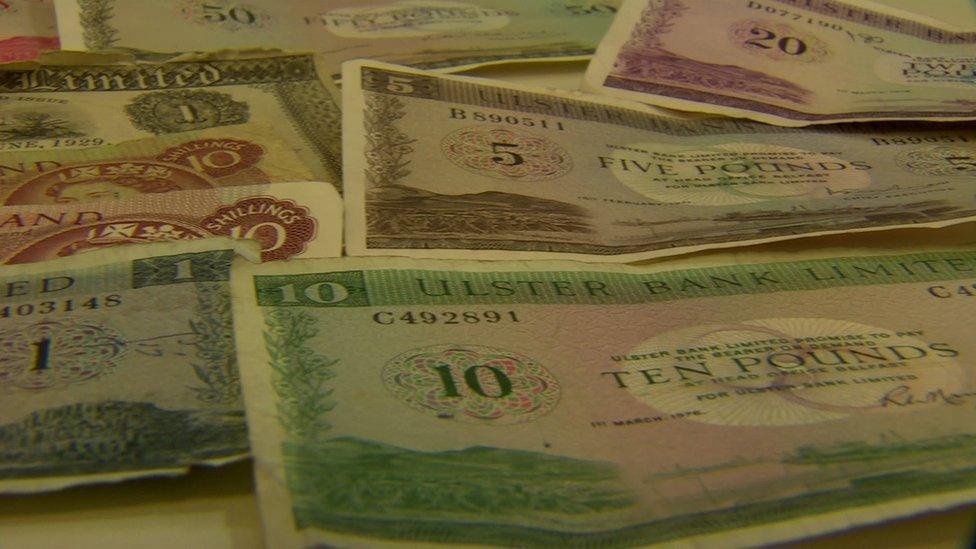
- Published13 September 2016
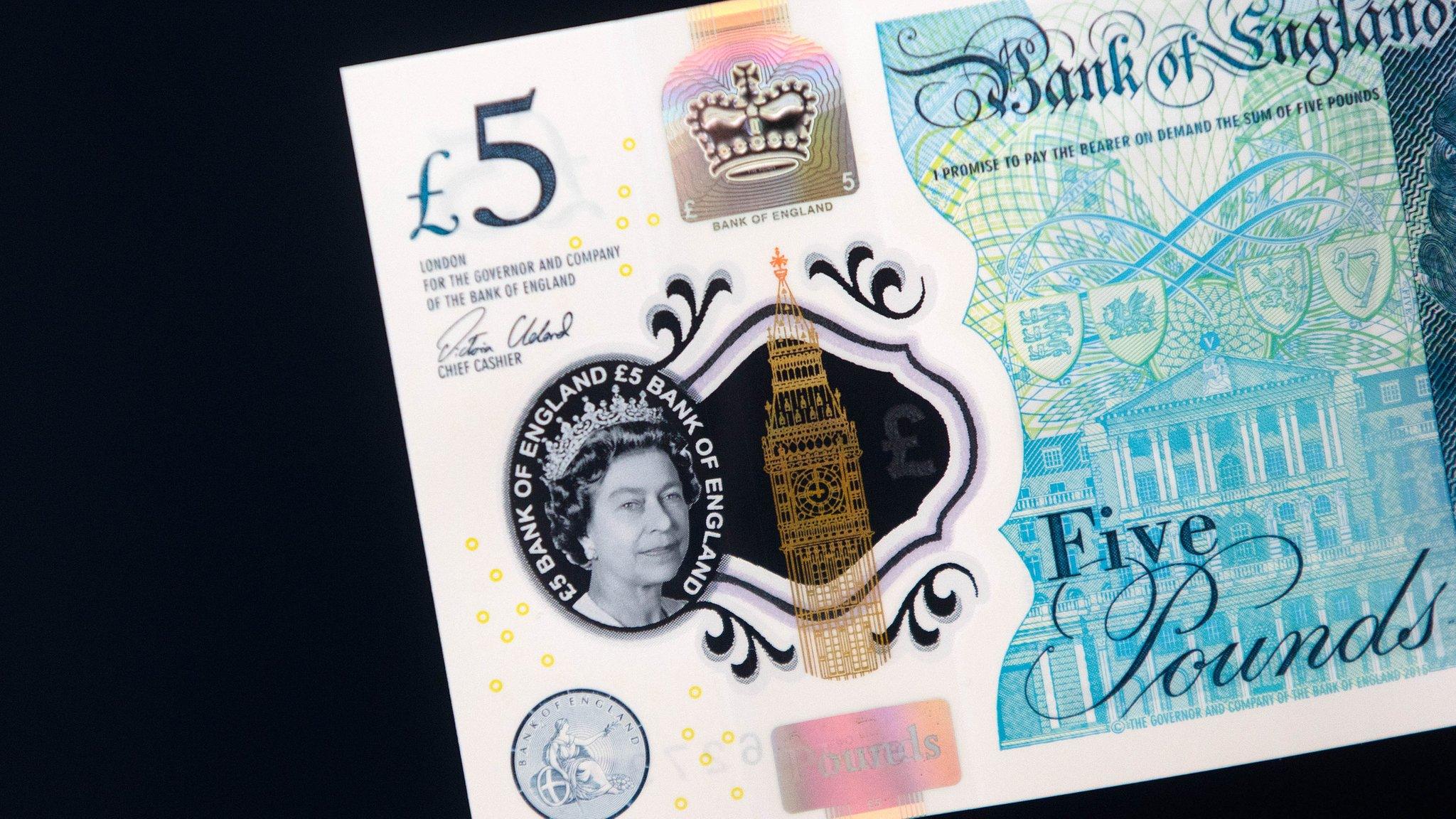
- Published13 September 2016
